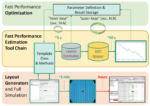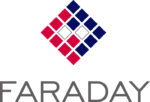Synopsys, a semiconductor design technology company, has announced its acquisition of Ansys, a simulation and analysis solutions provider. The deal, valued at approximately $35 billion, is expected to close in the first half of 2025, pending regulatory and shareholder approval. The acquisition aims to address the fusion of electronics and physics, augmented with AI, and […]
Analog ICs
What is analog design for integrated circuits?
Analog design for integrated circuits (ICs) involves creating devices and systems that process continuous signals. Analog plays a crucial role in translating real-world information such as sound, light, and temperature into electrical signals and vice versa. This article discusses the primary differences between analog and digital ICs, reviews key analog applications, and explores common analog […]
If you’re designing mixed-signal ICs, here are some tools to consider
Mixed-signal ICs are increasingly common in automotive, internet of Things (IoT), medical, industrial, consumer, and other applications. Designing mixed-signal ICs is more complex than simply designing an analog section and a digital section. There’s the interactions and interconnections between the sections, and the need to integrate software into the final solution. That makes designing mixed-signal […]
What are the elements of analog IC EDA tools?
Analog functions like sensor interfaces, signal conditioning, power management, and energy harvesting are needed in many applications. These functions are implemented with circuits like operational amplifiers, regulators, filters, sense amplifiers, low-noise amplifiers, phase-locked loops, analog-to-digital converters (ADCs), mixers, analog receiver front ends, and so on. These functions complement digital processing and can be implemented as […]
If you’re designing analog ICs, here are some tools to consider
Designing analog ICs can be a time-consuming and nit-picky process. As with the design of digital ICs, speed, power, and area (SPA) considerations are important. However, in the case of analog ICs, added challenges include gain, bandwidth, signal distortion, noise sensitivity, power supply sensitivity, thermal sensitivity, and more. All the major electronic design automation (EDA) […]
Managing design complexity and global collaboration with IP-centric design
Semiconductor design complexity has increased exponentially in recent years, and this challenge is exacerbated by the need to collaborate and scale across multiple, globally distributed teams while accelerating time to market. On top of these elements, the industry has been confronted with a major obstacle: the current talent shortage. There is no quick fix to […]
4-port, GbE PHY includes SAR ADC
Faraday Technology Corporation announces the availability of its 4-port Gigabit Ethernet PHY on UMC’s 28HPC+ process. This silicon-proven GPHY features an SAR ADC for superior PPA advantages and an advanced digital algorithm that significantly enhances SNR (signal-to-noise ratio). Designed to meet the growing demands for highly integrated SoC solutions in networking, consumer, and industrial automation […]
Siemens expands capabilities of IC design tools with EDA acquisition
Siemens Digital Industries Software announced that it has completed the acquisition of Insight EDA Inc., an EDA software company delivering groundbreaking circuit reliability solutions to many of the world’s leading integrated circuit (IC) design teams. Insight EDA’s technology identifies and helps address design-specific potential circuit reliability failure areas, bolstering the confidence of design engineers in […]
How to specify and use analog switches
An analog switch is an IC that can be used to control connections to analog and digital signals. These switches provide bidirectional connections when “on” and high impedance paths when “off.” There’s a wide range of analog switches for special functions. In some instances, they are used in place of mechanical switches. In other embodiments, […]
How do comparators and op amps compare?
Operational amplifiers (op amps) and comparators have two inputs, inverting and noninverting, and an output that can usually swing from rail to rail and have the same schematic symbol. So, what’s the difference? This FAQ compares the two devices and digs into some of the similarities and differences. It begins with a top-level comparison of […]










